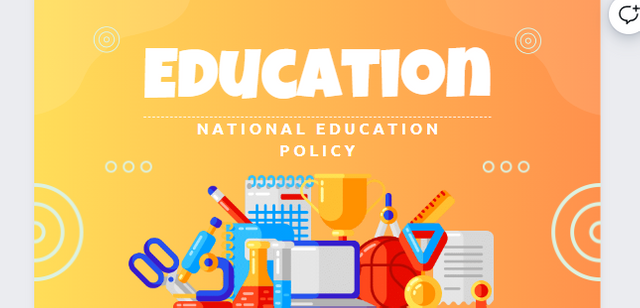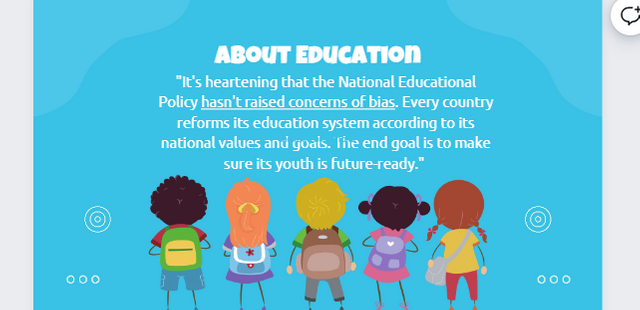
edited by canva
Hey everyone in today's article we will know about the huge changes in Indian education system.
Indian education system is undergoing huge transformation. Education right now is struggling because there are not enough schools and the government is not spending much money on it. In this article we explore these recent developments, focusing on curricular reforms, advancements in e-learning, and the challenges encountered during the pandemic.
Curriculum Restructuring for Holistic Development:
The National Education Policy 2020 is must need policy in education system. It is like opening a door to new ways of teaching and learning. Here is what its all about in simple words:-
- School for Everyone: The new policy wants every child to go to school, starting from when they're really young until they finish high school. They hope to achieve this by 2030.
- Helping Those Who Left:They want to bring back 2 crore kids who stopped going to school.
- New School Plan: Schools will teach kids for 12 years, starting with 3 years of preschool or Anganwadi for the little ones.
- Reading, Writing, and Math: Kids will learn important things like reading, writing, and math early on. They'll also do other fun activities and learn skills they might need for jobs.
- Learning in Local Languages: Until Grade 5, kids will study in their own language or the language spoken in their area. This makes it easier for them to understand.
- A fresh approach to assessing learning: Rather than relying only on tests, teachers will monitor students progress across all subjects to track their improvement.
- Increasing college opportunities: The aim is to encourage more students to attend college by adding 35 million new seats by 2035.
- Selecting college courses: In college, students have the freedom to choose their subjects based on their interests and can switch if they desire. It's all about pursuing what they find fascinating.
- Flexible Enrollment and Departure: Students can get the certificate even if they leave a course midway.
- Credit Transferability: Students can transfer their credits from one college to another, allowing them to switch institutions smoothly without having to start their academic journey from scratch.
- Encouraging Research: A recently established team will aid educational research efforts, concentrating on discovering innovative and improved teaching approaches.
- Regulations and Autonomy: While a central group will establish guidelines for colleges, institutions will have increased freedom to make their own decisions.
- Reduced Influence from Major Universities: Eventually, colleges will have fewer restrictions imposed by larger universities, allowing them to exercise greater autonomy in decision making.
- Harnessing Technology: The policy aims to integrate technology more extensively in schools to enhance learning outcomes for all.
- Learning Different Languages: Kids will be encouraged to learn lots of languages, and there will be places to learn special ones like Pali, Persian, and Prakrit.
Challenges faced during COVID-19:-

edited by canva
During COVID-19, teachers and students have had to adjust to online classes, deal with tech problems, cope with being apart from friends, handle stress, and face inequalities in access to internet and devices.
Downvoting a post can decrease pending rewards and make it less visible. Common reasons:
Submit